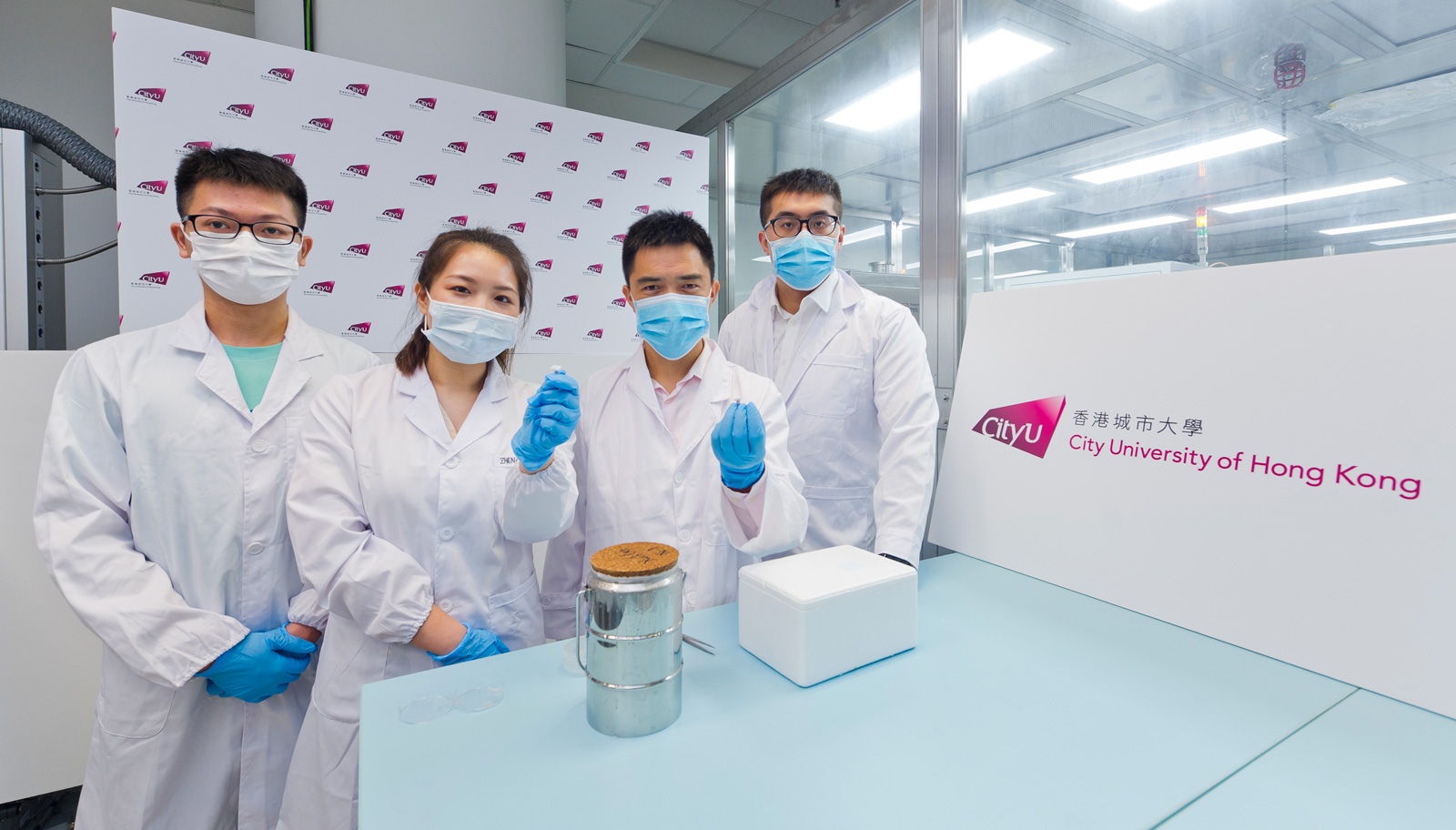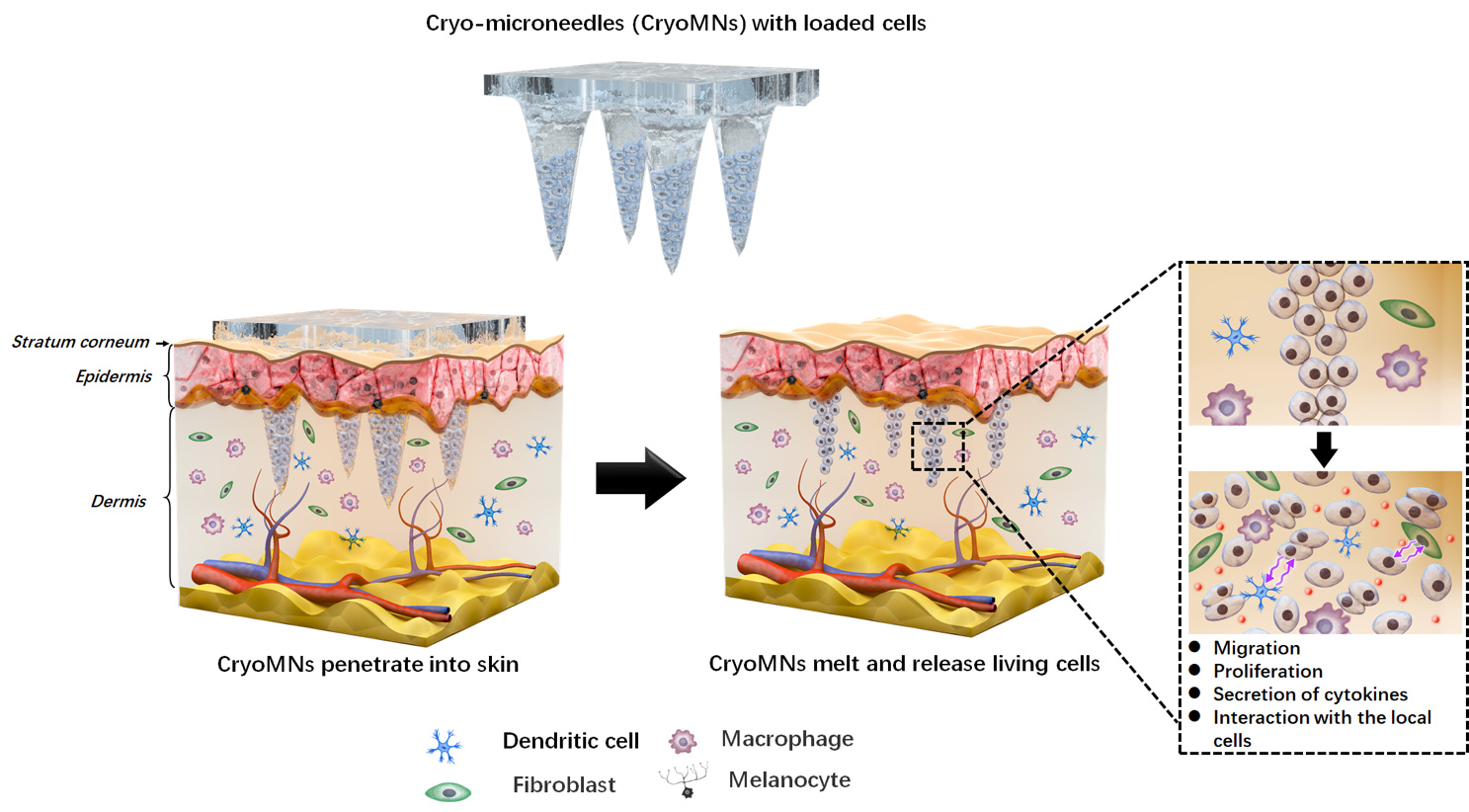Painless drug delivery via melting ice microneedle patches

A research team led by biomedical engineers at City University of Hong Kong (CityU) has developed a new generation of microneedle patches made of ice that melt after the pain-free delivery of drugs.
Experiments using this groundbreaking invention on mice with cancers have shown that the animals’ immune responses were much better than those seen in conventional vaccination methods. The technology paves the way for developing an easy-to-use cell therapy and other therapeutics against cancers and other diseases.

Made from a cryogenic solution, these icy microneedles are less than 1mm long and can deliver living mammalian cells into the skin. The device is like a skin patch and the microneedles can detach from the patch base, melt and then penetrate the skin.
The research is led by Dr Xu Chenjie, Associate Professor in the Department of Biomedical Engineering (BME), and the findings were published in Nature Biomedical Engineering under the title “Cryomicroneedles for Transdermal Cell Delivery”.
“Traditional cell therapy for skin disorders is invasive, painful, complicated, low-efficient, risks infection, and requires experienced professionals,” Dr Xu explained. “Our ready-to-use device can circumvent complex and redundant procedures during each drug administration. In addition, it can be stored for months in a refrigerator and is easily transported and deployed."

The applications for this device are not limited to the delivery of cells. It can package, store, and deliver bioactive therapeutic agents such as proteins, peptides, mRNA, DNA, bacterial, and vaccines, and it can improve both the therapeutic efficacy and patient compliance during cell therapies.
As a proof-of-concept, the researchers explored cell-based cancer immunotherapy through the intradermal delivery of ovalbumin-pulsed dendritic cells. Experiments showed that vaccination using therapeutic cells through this technology elicited robust antigen-specific immune responses and provided strong protection against tumours in mice. These results were superior to the therapeutic outcomes of conventional vaccination methods. One of the start-up teams supported by the Seed Fund of HK Tech 300, CityU's flagship innovation and entrepreneurship programme, is working on transferring the technology into product and to promote its application.
Dr Chang Hao, a former postdoc in CityU’s BME, is the first author of this study, and Dr Xu is the corresponding author. Other researchers include Professor Wang Dongan and Professor Shi Peng from BME. The research team collaborated with scientists from Nanyang Technological University and National University of Singapore.